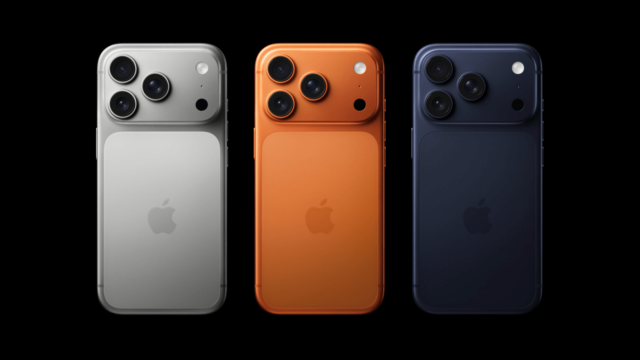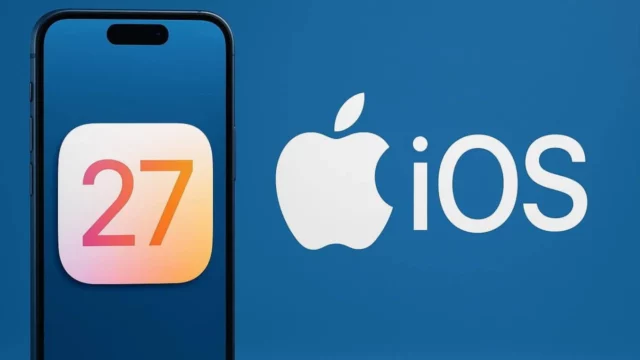Apple officially unveiled macOS Tahoe 26, the new operating system for Macs, at its WWDC 25 event today. As part of its decision to name macOS after the year it is released, similar to iOS systems, the company used the name macOS Tahoe 26.
Craig Federighi, Apple’s Senior Vice President of Software Engineering, emphasized that macOS is the heart and soul of the Mac, and highlighted that Tahoe builds on the features users love most.
Federighi noted that there is something for everyone, whether they are power users or new to Mac, and that they have added more features to enhance productivity. The new version improves the Mac experience with design updates, Continuity experiences, Spotlight enhancements, shortcuts, and Apple Intelligence updates.
macOS 26 Tahoe unveiled! New design with Liquid Glass

The most notable feature of macOS Tahoe 26 is the Liquid Glass design language, which we also saw in iOS 26. This new semi-transparent material reflects and refracts its surroundings, enhancing the Mac experience while maintaining the familiarity of macOS.
The Dock, sidebars, and toolbars have been improved to help users focus more on their content. The menu bar is now fully transparent, making the screen feel larger.
There are more customization options for which controls appear and how they are arranged in the menu bar and Control Center. The new design opens up more personalization possibilities on Mac. App icons come to life in light or dark appearances, colorful new light and dark tones, and a new transparent appearance.

Users can also change the colors of folders and add symbols or emojis to give them a unique identity. When combined with personalized wallpapers and theme colors, it’s possible to make your Mac an extension of your style.
Continuity with the Phone app and Live Activities
Thanks to Continuity, the Phone app is coming to Mac, allowing users to transfer cellular calls from nearby iPhones. The Phone app on Mac includes familiar features from the Phone app on iPhone, such as Recent Calls, Favorites, and Voicemail, as well as the latest updates like Call Screening and Hold Assist.

Call Screening automatically answers calls from unknown numbers and asks the caller for information to help the user decide whether to answer the call. When the user is on hold, Hold Assist keeps their place in line while they wait for a live representative, allowing them to continue working on their Mac.
Live Activities from the user’s nearby iPhone now appear in the Mac menu bar. This allows users to track real-time events such as an upcoming Uber ride, flight, or live sports scores. When a Live Activity is tapped, the app opens in iPhone Mirroring and displays more information, enabling users to take action directly from their Mac.
The biggest update to Spotlight
Spotlight, the central hub for searching on Mac, makes it easier to find what you’re looking for and offers new ways to take action. During a search, all results—including files, folders, activities, apps, messages, and more—are now listed together and sorted based on relevance to the user.
New filtering options quickly narrow searches to exactly what the user is looking for, such as PDFs or Mail messages. Spotlight can also display results from third-party cloud drives. When users don’t know exactly what they’re looking for, Spotlight’s new browse views make it easy to scan apps, files, clipboard history, and more.
Users can now perform hundreds of actions directly from Spotlight. Tasks like sending emails, creating notes, or playing podcasts can be done without switching between apps. Users can perform actions from both Apple apps and apps created by developers because any app can provide actions to Spotlight using the App Intents API.
Users can also run shortcuts and perform actions from the menu bar of the app they’re currently using, without taking their hands off the keyboard. Spotlight learns from users’ system-wide routines and suggests personalized actions, such as sending a message to a colleague they regularly communicate with. Spotlight also introduces quick keys, which are short character sequences that take users directly to the action they’re looking for.
New capabilities of Apple Intelligence
Apple Intelligence is becoming more capable while protecting user privacy at every step. Live Translation in Messages can automatically translate messages so that users can plan with new friends while traveling abroad, with the message translated as they type and delivered in the recipient’s preferred language.
When the user receives a response, the text is instantly translated. In FaceTime, users can follow along with live subtitles while hearing the speaker’s voice. In the Phone app, the user’s words are translated for the recipient as they speak during a call. This feature is powered by Apple-made models that run entirely on the device, ensuring that conversations remain private.
Shortcuts are getting more powerful with a new class of smart actions, enabling users to create more powerful shortcuts, including summarizing text with Writing Tools and creating images with Image Playground.
Users can now directly access Apple Intelligence models to create responses that feed into the rest of their shortcuts while maintaining the privacy of their information. For example, a student can create a shortcut that uses Apple Intelligence models to compare the audio transcription of a class lecture with their notes and add any important points they may have missed.
Users can also choose to use ChatGPT for extensive world knowledge and expertise. Additionally, users can now automatically run shortcuts when performing specific actions, such as saving a file to a folder or screen recording, at a specific time of day on macOS.
macOS Tahoe introduces new ways to create Genmojis, allowing users to start with existing emojis and descriptions, modify personal attributes such as hair length or accessories, and select main subject expressions.
Users will also have more control over personal attributes and expressions in Image Playground and access new styles like oil painting or vector art through ChatGPT. When users have a specific idea in mind, they can tap Any Style to define exactly what they want.
Apple Intelligence can analyze an email, website, note, or other content on your Mac to find the most relevant action items. Users can also use Apple Intelligence to automatically categorize Reminders into sections for easier management.
Apple Games
macOS Tahoe introduces Apple Games, an app that serves as a home for all your games, making it easier to return to favorites, discover new games, and play with friends. With the new Game Overlay, players can adjust system settings, chat with friends, or invite them to play without leaving the game. Players can also enable Low Power Mode to extend game sessions and maximize battery life while gaming. For developers, macOS Tahoe introduces Metal 4, which brings advanced graphics and next-generation rendering technologies to games, including MetalFX Frame Interpolation and MetalFX Denoising for smoother visuals and faster frame rates.
In addition to these enhancements, developers continue to bring new games to Mac, including upcoming titles like Crimson Desert and InZOI. Both games leverage software technologies like MetalFX Upscaling to boost performance and deliver high-quality visuals, and take advantage of ray tracing and the M3 and M4 chip family.
Upcoming titles include Cyberpunk 2077, Cronos: The New Dawn, Architect: Land of Exiles, Lies of P: Overture, HITMAN World of Assassination, EVE Frontier, and Where Winds Meet.
New experiences in Safari
Safari offers a new experience with a refreshed sidebar featuring a floating circular tab design on the toolbar and new sections that help users find saved content like iCloud Tabs and Saved more easily.
Compared to Chrome, Safari is 50% faster at loading frequently visited websites and offers four hours more battery life while streaming video. Safari now provides advanced fingerprinting protection by default across all browsing to offer more protection from trackers while browsing.
Messages and other apps
The Messages app introduces Backgrounds, Polls, and a redesigned details view that helps users easily navigate what’s been shared in a conversation. It also offers writing indicators that let participants in groups know exactly who is speaking, the ability to easily add new people directly from a group chat, and a more natural language search feature.
Journal is coming to Mac, making it easy to capture and write about daily moments and special events when inspiration strikes. Writing long entries on Mac and viewing them on a map is easy. Users can keep multiple journals for different aspects of their lives, and all of them sync across Apple devices.
Photos features an updated design with Liquid Glass elements, customization improvements, easier workflows, and sidebar consistency with iPadOS. Pinned Collections are coming to Mac, allowing users to access their most frequently used collections with a single click from the sidebar.
Users will also find new buttons for quick access to filtering and sorting options in all views, as well as the ability to customize the size of Collection tiles to view their library the way they want.
FaceTime has a redesigned home screen that includes the last callers’ Person Posters, Liquid Glass controls now float in the bottom right and can be retracted to create more space, and a new More button lets users quickly access features like SharePlay and Live Translation.
Notes adds the ability to import and export notes as Markdown files and support for capturing voice memos as transcribed text in the Phone app.
Accessibility and Security
Accessibility features include Magnifier on Mac, which allows users with low vision to zoom in on their surroundings using Continuity Camera or connected USB cameras, apply image filters to make items easier to see or read, and even change perspective while viewing presentations or books.
Additional features include Accessibility Reader, a new system-wide reading mode designed with accessibility in mind; a new Braille Access experience that offers a user-friendly interface for those with connected braille displays; and Vehicle Motion Cues, which helps reduce motion sickness in moving vehicles.
With Passwords, users can easily reference changes made to their accounts, previous versions of saved passwords, and details about when they were changed.
Release date and devices receiving the macOS Tahoe 26 update
All these features are now available for testing via the Apple Developer Program at developer.apple.com and will be released to the public via the Apple Beta Software Program at beta.apple.com next month.
The release will be available as a free software update this fall. Apple Intelligence features require supported devices, including all iPhone 16 models, iPhone 15 Pro, iPhone 15 Pro Max, iPad mini (A17 Pro), and iPad and Mac models with Apple Intelligence-enabled M1 and later chipsets, and the device language must be set to English, French, German, Italian, Portuguese (Brazil), Spanish, Japanese, Korean, or Chinese (Simplified). Additional languages, including Danish, Dutch, Norwegian, Portuguese (Portugal), Swedish, Turkish, Chinese (Traditional), and Vietnamese, will be available by the end of this year.













